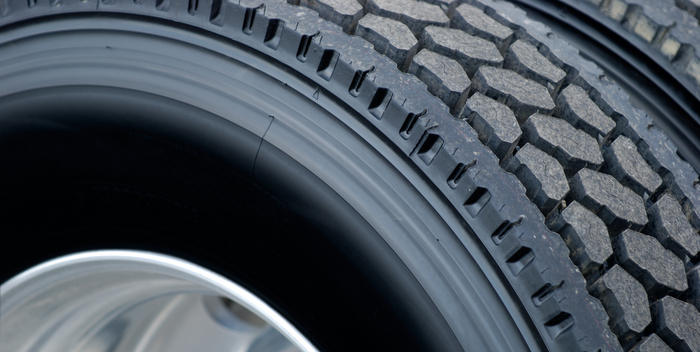The most common commercial truck tire size is the 295/75R22.5. Typical pricing at a local truck stop is about $500 for a steer and drive tire, while a trailer tire is in the $425 range. Of course, your actual pricing will vary depending on the specific make and model. Widebase tires (445/50R22.5) cost more than $900 each. An 18-wheeler running new, low-profile radial tires has a tire investment of approximately $8,400 for one tractor-trailer. As a result, fleets take tires seriously. Maximizing tire removal miles, increasing fuel economy and protecting the casing to ensure it is retreadable are important considerations for every fleet.
Retreads are important for fleets in order to keep their tire budget in check. Depending on the specific retread, retreading one of your own casings will cost somewhere between one-third and one-half the price of a new tire. Today’s retreads are manufactured in high-tech, state-of-the-art facilities. Casings receive rigorous analysis prior to making the final determination if the casing can be successfully retreaded. More than 85% of fleets retread. Linehaul fleets can expect to receive one or two retreads. Pickup and delivery fleets that tend to scrub off the tread much more quickly than linehaul fleets can expect two or more retreads per casing. This is assuming the sidewall holds up to the higher potential for curb damage from multiple turning in the inner city.
Keeping the tire running cool is the No.1 priority to ensure that the casing will be acceptable for retreading; heat is a tire’s worst enemy. Tires running at excessive speeds, fully loaded and underinflated are the worst possible scenario; air carries the load. When a tire is run underinflated, the sidewalls are flexing more and the tire footprint becomes longer. There is actually 18% more rubber on the road when the inside dual tire is underinflated at 70 PSI versus the outside dual tire running at the recommended 100 PSI. The extra rubber on the road leads to increased heat along with the increased sidewall flexing. The rubber compounds will begin chemically breaking down causing small rubber separations, which can be picked up during the retread process. When that happens, the casing will not pass the retread inspection stage.
The legal limit for remaining tread rubber is 4/32 in. for steer tires and 2/32 in. for drive, trailer and dollie tires. Running tires down to the legal limit will certainly help in maximizing tire removal miles, but the casing is prone to damage due to punctures and stone drilling. Protecting the significant investment in the tire casing should be a priority if you want to survive the retreading process. Most fleets target 5-6/32 in. remaining tread depth for steer and drive tires and 3-4/32 in. for removal of trailer tires. This allows enough rubber to protect your casing investment.
Maximizing tire removal miles is not always easy, but keeping tires properly inflated will go a long way in achieving that goal. It is important to choose the best tire for your specific service vocation. There are many tire choices for both new and retread tires in the market. The only way to know for certain which tire is best for removal miles at your fleet is do a field evaluation. Make sure your test size is large enough to make it statistically meaningful.
There are many variables that can adversely affect tire removal miles, which include: vehicle make/model; route; load; speed; and the driver. An aggressive driver can seriously affect tire removal miles.
Vehicle alignment is another potential issue that needs attention. If tires begin developing sign of irregular wear, there is always a reason. Proper vehicle alignment of both the tractor and trailer is paramount for success. The tractor may be perfectly in specification for alignment, but a poorly aligned trailer can lead to fast and irregular wear on steer and drive tires.
Drivers are the early warning sign when it comes to tire irregular wear. During the pre-trip vehicle inspection, drivers should be inspecting tires and report any unusual wear to maintenance. Identifying the specific cause of the irregular tire wear and solving the problem can ensure that the tire meets its target removal miles. Tires that develop uneven and irregular wear will lower the vehicle’s fuel economy.
Always work with your tire supplier to ensure that your tire program is delivering the best tire removal miles and protecting your casing for future retreading.














